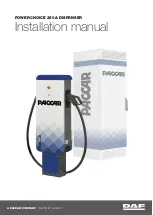
Driving skills
198
3
Th
e dr
ivin
g
gu
ide
Wading driving
Caution
●
Please note the water waves aroused by
the vehicles in front and the oncoming
vehicles, which may lead to water
exceeding the maximum permitted depth.
Once the depth of water reaches the
bottom of the body, do not forcibly wade.
●
You should speed up before entering into
water under no circumstances. The
formation of water vortices caused by
acceleration will make water enter into the
vehicle and damage to the engine and other
assemblies.
●
Do not open any door in the process of
wading. Otherwise, water may enter into
the vehicle, damaging electronic systems
and equipment in the vehicle.
●
When wading, after engine flameout,
never forcibly start the engine again, the
engine may be inhaled some water, starting
the engine again will cause irreversible
damage to the engine
If the vehicle needs to pass through road with
water, please note the following precautions:
●
Before wading, please correctly estimate or
detect the wading depth and characteristics of
water area, do not forcibly wade when the water
situation is unknown
●
The idle start-stop function of the engine must
always be turned off.
●
Shift to a lower gear, but avoid high engine
speed.
●
Choose a flat place, and drive the vehicle
steadily and slowly at the speed as walking.
●
During wading driving, do not stop half-way,
and do not let the engine stall.
●
After wading, slightly depress the brake pedal
for several times to dry the brake, in order to
restore the braking force.
●
After wading, the mud on the tread should be
promptly removed
Key points for driving in winter
Warning
●
If you try to increase the braking effect
of the engine on a slippery road surface
through downshifting, he drive wheels may
lose grip, which increases the risk of
slipping and accidents.
●
If the exhaust duct is blocked or
ventilation is poor, carbon monoxide (CO)
and other toxic gases may enter into the
vehicle. Especially when the vehicle is
trapped in snow, there is a risk of fatal
injury
















































